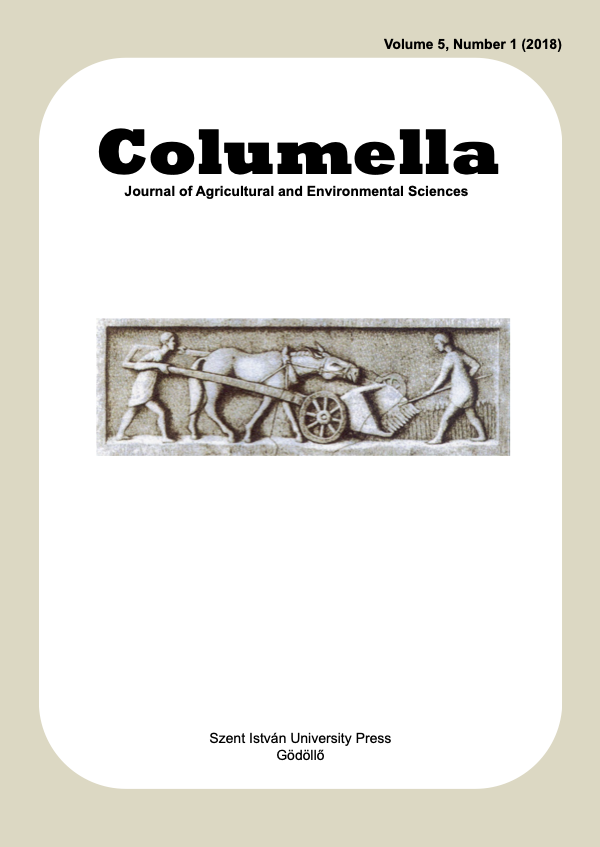The effect of different planting methods on the yield and spad readings of sweet potato (Ipomoea batatas L.)
DOI:
https://doi.org/10.18380/SZIE.COLUM.2018.5.1.7Keywords:
sweet potato, planting technology, yield, SPADAbstract
A small-plot field experiment was established to examine the sweet potato variety Ásotthalmi 12 in the case of various planting methods on chernozem soil in 2017. The obtained experimental results showed that, by using appropriate agrotechnical solutions, sweet potato can be successfully grown with favourable yields also in Hungary (the marketable tuber yield was between 23.2-50.7 t ha-1). As opposed to bibliographical references, higher yields were obtained in flat planting than in ridge planting at both row spacing values - 1.0 m (32.2 t ha-1 and 23.2 t ha-1, respectively) and 0.75 m (50.7 t ha-1 and 39.4 t ha-1). The 0.75 m row spacing was more favourable than 1.0 m. The proportion of non-marketable tubers was also more favourable (lower) in flat planting (9.97-10.9%) than in ridge planting (13.03-15.57%). During the growing season, the SPAD readings of the sweet potato leaves increased between July and August, reaching their peak in mid-August (39.61-50.31). SPAD readings decreased until harvesting (38.89-43.31 on 7th October). Positive correlation was observed between the marketable tuber yield and SPAD readings on 10th July (0.632xx) and 21st July (0,664xx).
Downloads
Published
Issue
Section
License
Copyright (c) 2018 Péter Pepó

This work is licensed under a Creative Commons Attribution-NonCommercial-NoDerivatives 4.0 International License.






